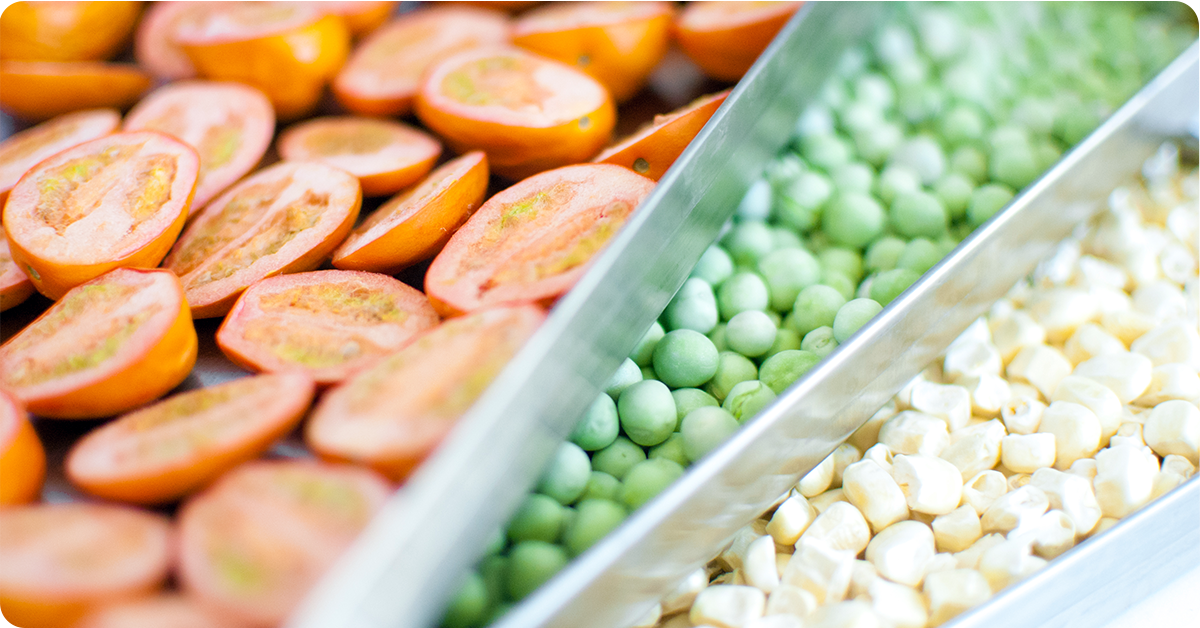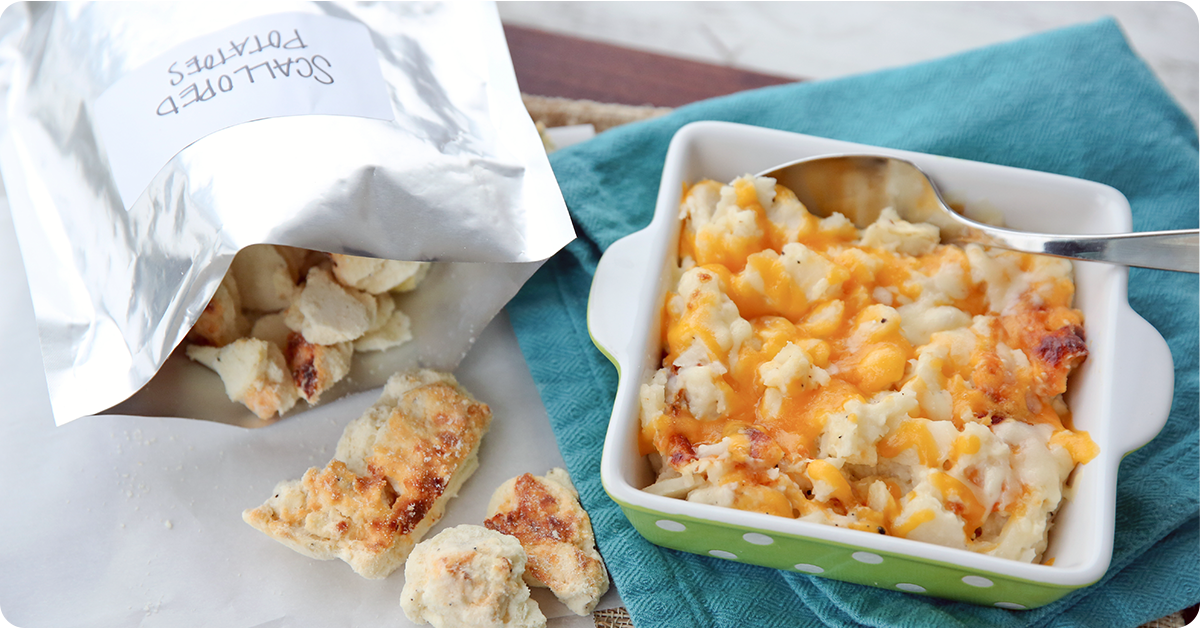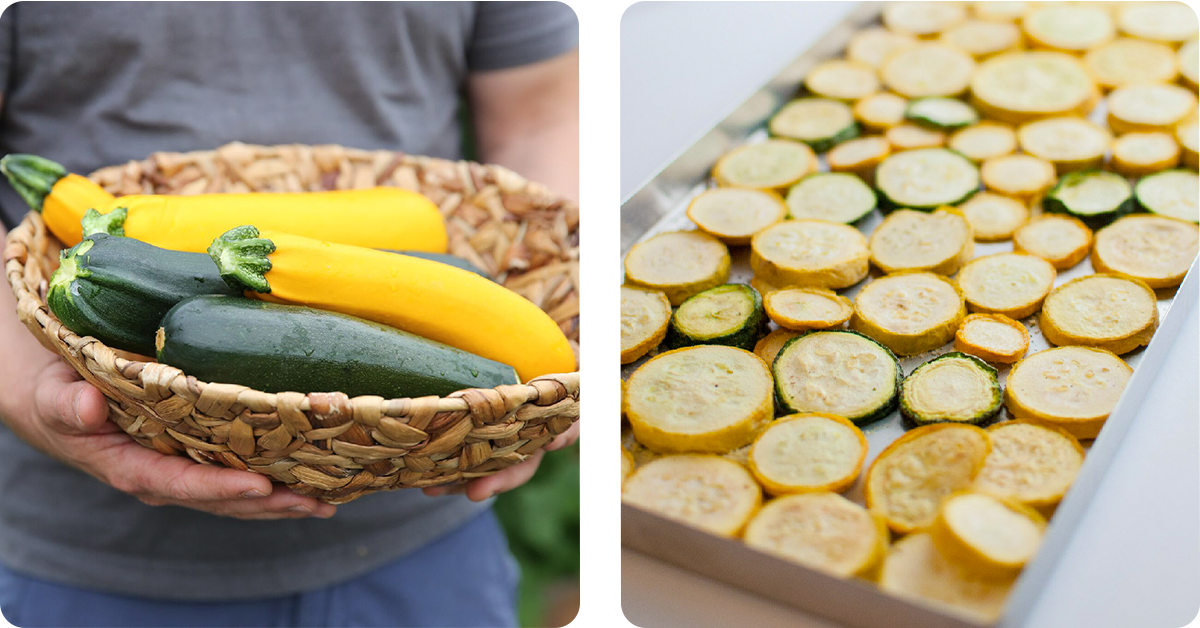
One of the joys of gardening is reaping the rewards of your hard work by enjoying the delicious fruits, vegetables and herbs you've grown. However, finding yourself with more produce than you can consume or share with friends and family is common. Preserving your garden harvest becomes crucial, and one effective method is freeze drying.
Freeze drying is a preservation technique that allows you to extend the shelf life of your garden's offerings while retaining their flavor, nutritional value and vibrant colors. So, let's explore the process of freeze drying at home and how you can utilize this technique to preserve the flavors of your garden throughout the year.
What Foods Can be Freeze-Dried
You can freeze dry almost anything if you properly freeze dry the food, it can be good for up to 25 years. The flavor and nutritional value of the produce you harvest will remain and the process is fairly easy to do.
What types of foods can be preserved using this technique?
Fruit
Strawberries, blueberries, raspberries, bananas, apples, mangoes and pineapples are commonly freeze-dried. Many people will eat them as a crunchy snack or rehydrate them to use in various recipes.

Vegetables
Popular vegetables include peas, corn, carrots, green beans, bell peppers and broccoli. Those vegetables and others can be rehydrated and used in soups, stews or side dishes.
Meats
Beef, chicken, turkey and ham are available for emergency rations or backpacking meals. When rehydrated, you can use them in any meal or recipe in which you’d use “fresh” meats in.
Dairy Products
Items like cheese, yogurt and ice cream can be freeze-dried. They are often used in astronaut food or as ingredients in powdered mixes.
Herbs and Spices
Herbs such as basil, oregano, parsley and mint retain their flavor well. Spices like garlic, onion, ginger and chili flakes are also commonly freeze-dried.
Eggs
Whole eggs, egg whites or egg yolks can be freeze-dried and used in baking or cooking.
Benefits of Freeze Drying Food
Freeze drying preserves the nutritional content of the food, including vitamins, minerals and antioxidants, more effectively than other preservation methods. The low temperatures used during freeze drying minimize nutrient loss, allowing you to enjoy the health benefits of your garden's produce for an extended period.
Unlike canning or dehydrating, freeze drying retains more of the original flavors, colors and textures of fresh produce. Whether it's the intense sweetness of berries or the crispness of garden greens, freeze drying captures the essence of your garden in each bite.
Properly freeze-dried food has an extended shelf life, often ranging from several months to several years. This allows you to enjoy your garden's produce even when it's out of season, reducing food waste and providing homegrown options year-round.

Tips for Freeze Drying Your Garden Harvest
Choose fruits and vegetables at their peak ripeness for the best flavor and nutrient content. Avoid overripe or underripe produce as it may not yield optimal results.
Cut the produce into uniform pieces to ensure even freeze drying. Smaller pieces will freeze and dry more quickly than larger ones.
Some fruits, like apples or peaches, may need to be treated with lemon juice or a solution of water and ascorbic acid to prevent browning. Research studies show that when you pretreat with an acidic solution, you increase the likelihood of destroying potentially harmful bacteria during the freeze drying process.
It’s important to look into what pretreatment guidelines your specific produce will need. When you pretreat produce, it reduces oxidation, retains the vibrant colors and lengthens your garden harvest shelf life.
For more information on pretreating your produce, please visit PennState Extension Guide to Fruits and Vegetables Preservation.
Freeze Dry Individual Fruits and Vegetables or Full Meals
Those who freeze dry even just once have found that freeze drying retains the essence of each ingredient and unlocks a world of possibilities for their future use.
Rehydrating these freeze-dried ingredients allows you to incorporate the natural flavors and nutrients into a myriad of dishes, ranging from colorful salads and hearty soups to delectable stir-fries and mouthwatering pasta sauces. The convenience of having a pantry stocked with freeze-dried fruits and veggies means you can enjoy the taste of your garden's harvest year-round.
From culinary experiments to everyday meals, integrating individual freeze-dried ingredients into your kitchen repertoire is seamless, making every dish a celebration of your homegrown harvest.

Common Uses for Freeze-Dried Ingredients
By freeze drying full meals, you can harness the true potential of your garden's bounty throughout all seasons and situations.
Easy Meal Prepping
When you embrace the versatility of freeze drying, you can discover the remarkable potential of preserving entire meals prepared from your garden harvest. Though the steps for freeze drying full meals might vary depending on the ingredients and recipes, the effort is worthwhile.
Lightweight Camping Meals
Not only do freeze-dried full meals save the day during hectic weeks, but they also prove invaluable for camping trips or hikes. During weekend camping trips, these lightweight, space-saving packets of deliciousness become a delight to unpack and savor amidst the great outdoors. The convenience of having ready-to-eat, garden-fresh meals adds an extra layer of enjoyment to your camping experience.
Food Storage
Preppers can also take comfort in knowing they have a stockpile of nutritious and long lasting meals, ready to sustain them during unforeseen circumstances or emergencies. With a possible shelf life of up to 25 years, freeze-dried foods are an excellent and nutritious food storage option.
How to Freeze Dry Your Garden Harvest
Freeze drying presents a fantastic solution if you're looking to preserve the abundance of fruits and veggies from your backyard garden. Here are a few simple steps to ensure your homegrown ingredients retain their flavor and nutrients for long-term storage.
- The first step to freeze drying food from your garden is to harvest your produce when it is at peak ripeness. This ensures the best flavor and nutritional content.
- Thoroughly wash and prepare the fruits, vegetables or herbs you wish to freeze dry. Remove any damaged or bruised portions and slice them into uniform pieces. Smaller pieces tend to freeze dry more quickly and evenly.
- Arrange the prepared produce on a baking sheet or tray and place it in the freezer. This step, known as pre-freezing, prevents the food from clumping together during the freeze-drying process.
- Once the produce is pre-frozen, transfer it to the shelves of a freeze dryer. Ensure that the items are evenly spaced and not touching each other to allow for efficient drying.
- Start the freeze dryer, it will gradually lower the temperature and create a vacuum. This process freezes the produce and initiates sublimation, where water vapor transitions from a solid state to a gas without passing through the liquid phase. The freeze dryer then collects and removes the moisture.
- Once the freeze drying process is complete, remove the dried produce from the freeze dryer. Pack them in airtight containers or vacuum-sealed bags to protect against moisture and air, which can lead to spoilage. Label and date the containers for easy identification.
Following the freeze drying directions provided by the manufacturer for your specific freeze dryer is essential. Certain details may vary based on the type of equipment and the particular ingredients undergoing the freeze-drying process.

Freeze Dry Your Garden Harvest
When you freeze dry your produce, it ensures that the taste, texture and nutrients remain intact for an extended period. This versatile preservation method enables you to enjoy your garden's delights year-round and allows you the convenience of creating space saving, lightweight pantry items that can be easily rehydrated and used in a variety of dishes.
Whether you are an avid gardener, homesteader, food enthusiast or simply looking for practical ways to reduce food waste, freeze drying your garden harvest is a rewarding and sustainable choice.
Information for this article was provided by Tina Potter, Ogden IFA Country Store; Rebecca Broadus, Tremonton IFA Country Store; Ashley Adamant, Practical Self Reliance; Harvest Right.










